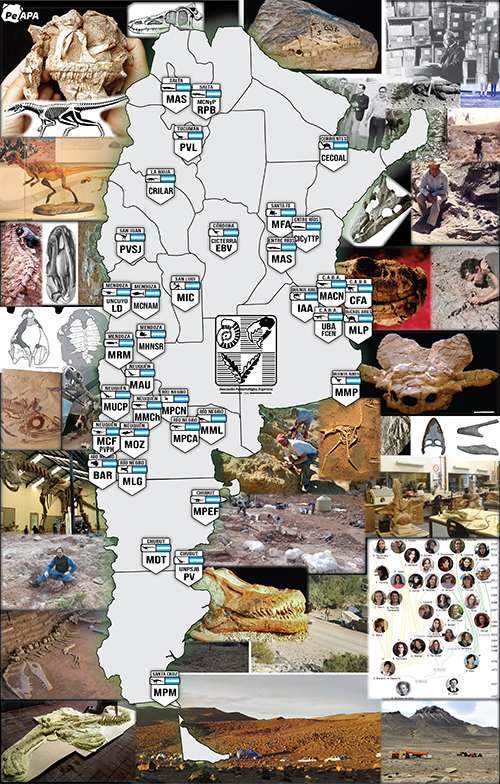TURONIAN FLORA OF NEW JERSEY, USA
Resumen
An extraordinarily diverse flora was discovered in sediments of the Old Crossman Clay Pit, Raritan Formation (New Jersey, USA). The age of these rocks has been estimated as Turonian (≈ 90 MYBP, Late Cretaceous) by palynological and stratigraphic correlations. The environment in which the sediments were deposited is described as fluvial (non-marine) with levee, back levee and swamp conditions. The fossils, preserved as charcoal, maintain their three-dimensional structure, and an excellent morphological and anatomical preservation, offering a unique opportunity for studying characters rarely available for plant fossils. This flora encompasses mosses, ferns, gymnosperms and angiosperms, and a preliminary study is presented here with special emphasis on selected taxa. The Raritan sediments have yielded the oldest records for flowers of hamamelidaceous, capparealean, ericalean, and fagalean affinities and the oldest Clusiaceae as well as the oldest unequivocal monocot. Although the relationships of some taxa are still uncertain, for others the relationships are clear. Thus far, this flora has enlightened our knowledge of several plant groups, in particular the angiosperms. Based on the paleoposition of New Jersey in southern Laurasia in low-middle latitude on the north side of the Tethyan Sea, a tropical to subtropical climate was previously proposed for the Raritan Formation. The elements of the Old Crossman Clay Pit locality are consistent with this conclusion.
KEY WORDS. Raritan Formation. Paleoflora. Cretaceous. Mosses. Ferns. Seed plants.
Descargas
Publicado
Número
Sección
Licencia

Los/las autores/as conservan los derechos de autor/a y garantizan a la revista el derecho de ser la primera publicación del trabajo licenciado bajo una licencia CC Attribution-NonCommercial 4.0 que permite a otros/as compartir el trabajo con el reconocimiento de la autoría y de la publicación inicial en esta revista.






















